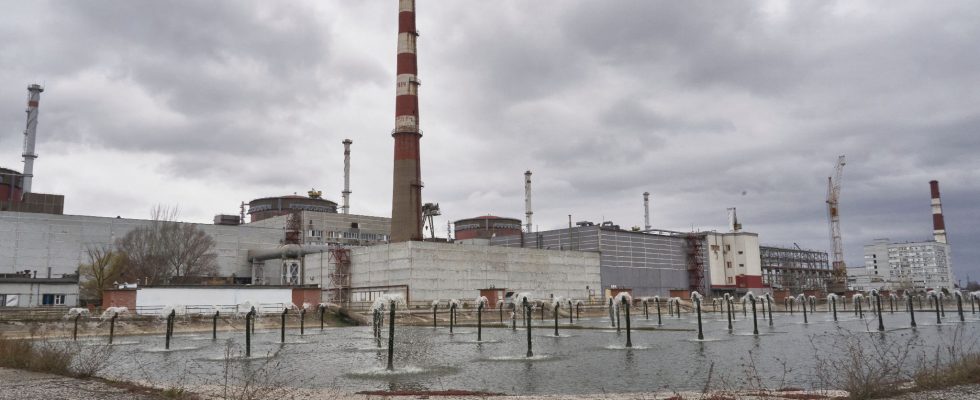After the problem of electricity, that of water? Disconnected from the network on several occasions, leaving the threat of an incident hanging over, the Zaporijia nuclear power plant is now faced with a possible lack of water. In question ? The partial destruction of the Kakhovka hydroelectric dam, on the night of Monday June 5 to Tuesday June 6. Gutted at the top, it now lets large quantities of water slip, raising fears of a drop in the level of the artificial lake used to cool the reactors.
“The Zaporijia site does not have air-cooling towers, these large concrete installations from which plumes of steam escape. Its cooling system therefore operates in an open ‘circuit’ with significant water withdrawals, carried out thanks to pumps”, confides an expert. More specifically, “the plant draws water from retention basins which are themselves fed by the Kakhovka reservoir. From the moment we have this impressive breach in the dam, the water in the reservoir will drop and the question is : from when will it be impossible to supply the cooling ponds?” summarizes Bruno Chareyron, director of the Criirad laboratory, the Commission for Independent Research and Information on Radioactivity, co-founded by anti-nuclear activist Michèle Rivasi.
Such a situation could force the occupants of the plant to resort to tanker trucks in the long term to ensure the cooling of the reactors. However, we are not there yet. The lake is two to three kilometers wide. And it was filled at the time of the partial destruction of the dam. “Its depth reaches 16.6 meters deep,” notes the National Nuclear Power Company of Ukraine EnergoAtom.
Shrinking safety margins
According to experts from the International Atomic Energy Agency (IAEA), there would be no immediate safety problem. An opinion shared by David Boilley, president of the Association for the control of radioactivity in the West (Acro): “Certainly, the drop in the water level can pose problems for obtaining cooling of the reactor. However, these The latter have been discontinued for a few months now. So they give off much less heat”.
Interviewed by the British newspaper The Guardian, a former operator of the plant specifies: five reactors out of the six remain in a “cold shutdown” state, that is to say maintained at a temperature below 200 degrees, which removes an element of risk. Moreover, the Zaporizhia cooling basins can theoretically be isolated from the Kakhovka reservoir. “In theory, we should be able to keep a certain reserve of water even if that of the dam decreases sharply. Enough to potentially hold out for several months if necessary”, indicates David Boilley.
The problem ? How can you be sure that the right strategy is implemented when needed? On site, the staff is reduced to a minimum. And the pressure exerted by the Russian occupier can result in bad decisions or incidents at any time. “Personnel, power supply and now water supply… All the safety margins are decreasing” laments Bruno Chareyron. IAEA Director Rafael Grossi is fighting to prevent the situation from degenerating. But we can see it, he has no control.
